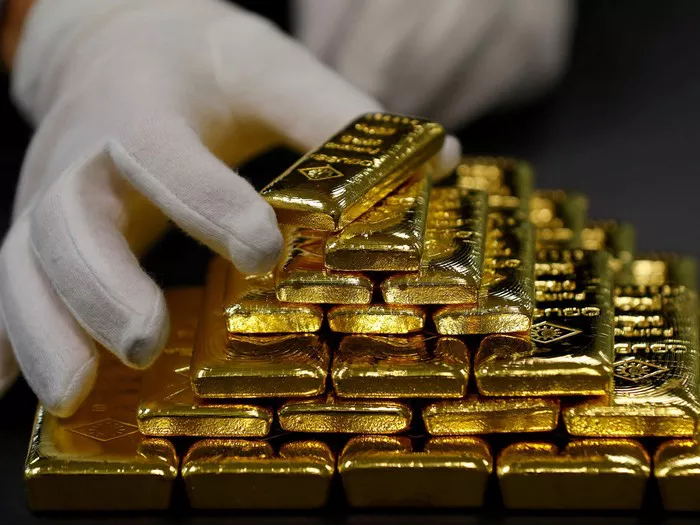Gold futures contracts are a popular derivative instrument that allows traders to speculate on the future price of gold without the need for physical ownership or delivery of the precious metal. While futures contracts can be settled in various ways, including cash settlement, physical settlement is a common method in the gold futures market. In this article, we delve into the concept of physical settlement in gold futures trading, exploring how it works, its implications for market participants, and its role in the broader gold market ecosystem.
Understanding Gold Futures Contracts
Gold futures contracts are financial agreements that obligate the buyer to purchase, and the seller to deliver, a specified quantity of gold at a predetermined price on a future date. These contracts are traded on regulated exchanges such as the Chicago Mercantile Exchange (CME) and provide market participants with a means to hedge risk, speculate on price movements, and gain exposure to the gold market. Gold futures contracts typically represent a fixed quantity of gold, such as 100 troy ounces, and have standardized delivery terms and contract specifications.
Physical Settlement vs. Cash Settlement
In futures trading, settlement refers to the process of fulfilling the contractual obligations of the futures contract. There are two primary methods of settlement: physical settlement and cash settlement. Physical settlement involves the actual delivery of the underlying asset upon expiry of the futures contract. In the case of gold futures, physical settlement entails the transfer of physical gold bars from the seller to the buyer at a designated delivery location. Cash settlement, on the other hand, involves the exchange of cash equivalents based on the difference between the contract price and the prevailing market price at expiry.
Mechanics of Physical Settlement in Gold Futures
In the gold futures market, physical settlement occurs according to the terms and conditions specified by the exchange and the futures contract. Prior to the expiration of the contract, both the buyer and the seller of the futures contract receive instructions from the exchange regarding the delivery process, including delivery location, quality standards, and delivery dates. The seller of the futures contract is responsible for delivering the specified quantity of gold in the form of approved gold bars that meet the exchange’s delivery standards. Upon receipt of the gold bars, the buyer makes payment to the seller based on the agreed-upon contract price.
Implications for Market Participants
Physical settlement in gold futures contracts has several implications for market participants, including producers, consumers, investors, and speculators. For gold producers, futures contracts provide a means to hedge against price fluctuations and lock in prices for future production. Consumers and investors use gold futures contracts to gain exposure to the gold market and manage risk in their portfolios. Speculators trade gold futures contracts to capitalize on price movements and profit from changes in market sentiment. Physical settlement ensures the integrity and reliability of the futures market by facilitating the actual exchange of the underlying asset and ensuring that contractual obligations are met.
Role of Warehouses and Delivery Facilities
Physical settlement in gold futures contracts requires the availability of warehouses and delivery facilities where approved gold bars can be stored and transferred between counterparties. Exchanges typically designate approved warehouses and delivery points where gold bars meeting specified quality standards can be delivered and exchanged. These facilities play a crucial role in the delivery process, ensuring the efficient transfer and storage of physical gold and providing confidence to market participants that contractual obligations will be fulfilled.
Market Dynamics and Arbitrage Opportunities
Physical settlement in gold futures contracts can impact market dynamics and create arbitrage opportunities, particularly as expiry approaches. Traders may seek to exploit price differentials between futures prices and spot prices, buying gold futures contracts and taking delivery of physical gold to fulfill contractual obligations. Conversely, traders may sell gold futures contracts short and deliver physical gold to settle their positions, profiting from discrepancies between futures prices and spot prices. These arbitrage activities help align futures prices with spot prices and ensure efficient price discovery in the gold market.
Regulatory Oversight and Compliance
Physical settlement in gold futures contracts is subject to regulatory oversight by governing bodies such as the Commodity Futures Trading Commission (CFTC) in the United States. Regulatory authorities establish rules and regulations to ensure the integrity and transparency of the futures market, including standards for delivery, quality control, and reporting requirements. Market participants must comply with regulatory guidelines and exchange rules to maintain the orderly functioning of the gold futures market and uphold investor confidence.
Conclusion
In conclusion, physical settlement plays a vital role in the gold futures market, facilitating the exchange of physical gold between counterparties and ensuring the fulfillment of contractual obligations. Physical settlement provides market participants with confidence in the integrity and reliability of the futures market, allowing producers, consumers, investors, and speculators to hedge risk, gain exposure to the gold market, and capitalize on trading opportunities. By understanding the mechanics and implications of physical settlement in gold futures contracts, market participants can navigate the complexities of the gold market with clarity and confidence, contributing to the efficient functioning and liquidity of the futures market ecosystem.


